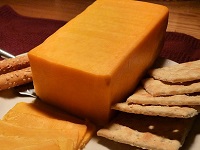Marcillac (France)
Marcillac AOC is an appelation from the Marcelliac area in Aveyron in South West France.
Marcillac wines are made from 90-100% Mansois grapes (the local name for Fer Servadou).
Marcillac Flavors
Raspberry, Cherries, and Blackberry are typical Marcillac flavors.
Complex notes of Spicy Herbs, Smoke, Leather, and Forest Floor.
Rustic-wild texture. Real Stone Minerality.
Raspberry |
Red Cherry |
Black Cherry |
Blackberry |
Spicy Herbs |
Smoke |
Leather |
Slate |
Marcillac Profile
Marcillac tends to be Fruity with good Tannins:
| SUGAR: | Dry (3 g/l) |
| BODY: | Medium |
| TANNINS: | Medium - High |
| FRUIT: | Medium Plus |
| ACIDITY: | Medium |
| ALCOHOL: | 13% ABV |
|
Serving Temerature: 16-17°C (61-63°F) | |
Marcillac Food Pairing
Marcillac pairs best with savory dishes.
Antipasti |
Charcuterie |
Stews |
Soups |
Hamburger |
Pork |
Duck |
Rabbit |
Excellent Pairings
Cold Curts. Chorizo. Salami.
Roast Beef. Sausages.
Savory Soups. Cassoulets. Stews.
Confit de Canard. Smoked Duck.
Rilettes. Calves Liver.
BBQ. Hamburger. Bacon.
Cheeses
Blue Cheese.
Roquefort. Gorgonzola.
Hard Cheese.
Cantal. Comté. Dry Jack. Manchego. Parmesan.
French Specialities
Aligot Aveyronnais (Mashed Potatoes, melted Cheese, Cream, and Garlic with Sausages).
Poulet Basquaise (Basque-style Chicken Stew).
Tripoux (Stuffed Sheep's Tripe).
The Ideal Glass for Marcillac
The Bordeaux Glass was designed for enjoying fuller-bodied, tannic red wines.

|
They are taller than other red wine glasses, and has a slimmer bowl.
The slimmer bowl directs the wine to the back of your mouth for a maximum taste. The size also allows the bouquet of the wine to develop, smooth out rough edges, play down tannins, and allow the wine to achieve balance. |
If You Like Marcillac
You Might Also Like:
Marcillac AOC
Macillac was granted a VDQS status in 1965 (a classification below AOC).
In 1990 the AOC status was granted under the name Marcillac AOC.
The main grape is Mansois (90%), the local name for Fer Servadou. The remainder must be Cabernet Sauvignon, Cabernet Franc, or Merlot.
DNA testing has put Fer Servadou in the Carmenere family.









